Project Management
Better Software Magazine Articles
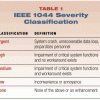 |
Tracking Severity: Assessing and Classifying the Impact of Issues (a.k.a. Defects) How does one categorize Severity? Should you use numbers like 1, 2, 3; generic names like High, Medium, Low; or more specific names? A telephone switching system, for example, might use industry-specific categories such as "system issue," "line issue," or "call issue." Other environments, as we'll see in this article, tailor classification terms to meet their own functional needs. |
Tim Dyes
June 26, 2002 |
|
Testing and Quality: Are You As Bored As I Am? The next time someone says to you something like, "You can't test quality into a software project," you might reply, "Well, you can't manage it in either." There may be a pregnant pause, but perhaps it will lead to thoughtful discussions about testing and quality. At the very least, it'll make those twin subjects a whole lot less (shh!) Dullsville and boring! |
Robert Glass
June 26, 2002 |
|
|
How to Ensure that Your Configuration Management System will Function Fully and Correctly No matter what the origin of your CM software, improper installation, poor training, and program defects can lead to disaster. This article discusses how to make the most of your current CM tools, and how to ensure that your CM system will do what it's supposed to do. |
Bob Johnson
June 26, 2002 |
|
 |
Software Measurement Programs A metrics program is any planned activity in which you use measurement to meet some specific goal. If you do not have a clear technical goal for a metrics program, then you are almost certainly not ready for such a program. Here's how to design a measurement program that leads to decisions and actions. |
Norman Fenton
June 26, 2002 |
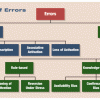 |
Anticipating Human Error This article makes three points. First, errors happen. Second, systems can encourage errors. Third, a basic understanding of the kinds of errors humans make can help us design better systems. Here are some suggestions to help avert trouble. |
Ramon M. Felciano
June 26, 2002 |
|
A Recipe for Success: Ingredients for Building a Great Software Team Great people, interesting work, and smart referees make for a successful software team. Bobbie Patnode recommends some ways to keep your team engaged, including treating them well, paying them well, and training them well. |
Bobbie Patnode
June 26, 2002 |
|
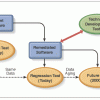 |
It's January 1, 2000 . . . What Have You Overlooked? You have a Y2K effort in place, and it's all about preparation for an event you know is coming. What have you overlooked that’s going to bite you? This article will help give you 20-20 foresight to anticipate potential "gotchas." |
Robin F. Goldsmith
June 26, 2002 |
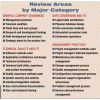 |
Packaged-Software Indigestion Vendor reviews are a wonderful technique to taste before you swallow commercial, off-the-shelf software. They're also a great way to build a partnership with your business decision-makers on packaged-software projects, instead of being brought in late or left out completely. Here are some important things to consider when conducting a vendor review. |
Eileen M. Strider
June 26, 2002 |
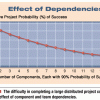 |
Application Integration Building an integrated suite of applications can be complicated, especially when several groups are working on the project in different locations. Here are some risks, as well as recommendations for allowing planning, development, and testing artifacts to be shared between disparate groups. |
Sam Guckenheimer
June 26, 2002 |
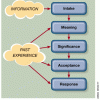 |
Untangling Communication Software development involves sharing critical ideas in a hectic, high-pressure environment. If you want your team to excel in its software projects, it's important to understand the communication circuitry at work in your everyday interactions. Here's a look at the components of the communication process, and five common errors to avoid. |



